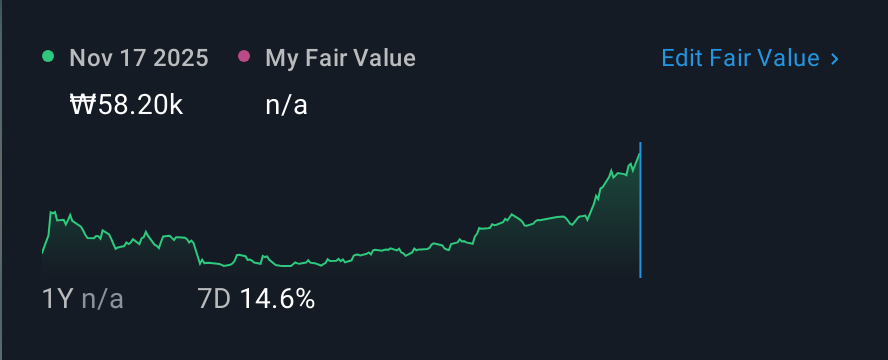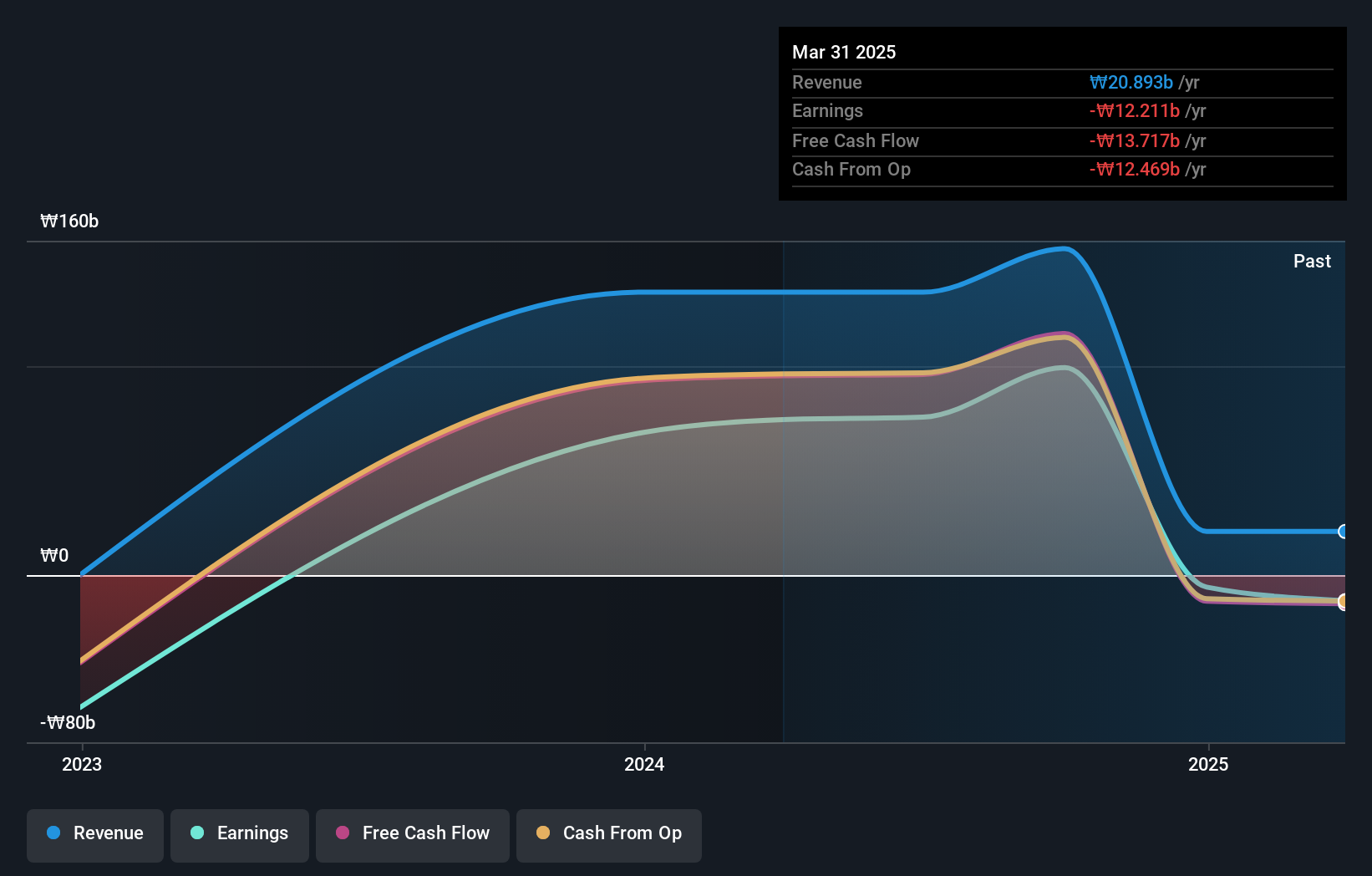- South Korea
- /
- Biotech
- /
- KOSDAQ:A475830
Orum Therapeutics, Inc.'s (KOSDAQ:475830) market cap touched ₩487b last week, benefiting both retail investors who own 44% as well as institutions

Key Insights
- Significant control over Orum Therapeutics by retail investors implies that the general public has more power to influence management and governance-related decisions
- A total of 9 investors have a majority stake in the company with 50% ownership
- Insiders own 17% of Orum Therapeutics
If you want to know who really controls Orum Therapeutics, Inc. (KOSDAQ:475830), then you'll have to look at the makeup of its share registry. The group holding the most number of shares in the company, around 44% to be precise, is retail investors. In other words, the group stands to gain the most (or lose the most) from their investment into the company.
Following a 11% increase in the stock price last week, retail investors profited the most, but institutions who own 23% stock also stood to gain from the increase.
Let's delve deeper into each type of owner of Orum Therapeutics, beginning with the chart below.
See our latest analysis for Orum Therapeutics

What Does The Institutional Ownership Tell Us About Orum Therapeutics?
Many institutions measure their performance against an index that approximates the local market. So they usually pay more attention to companies that are included in major indices.
Orum Therapeutics already has institutions on the share registry. Indeed, they own a respectable stake in the company. This implies the analysts working for those institutions have looked at the stock and they like it. But just like anyone else, they could be wrong. It is not uncommon to see a big share price drop if two large institutional investors try to sell out of a stock at the same time. So it is worth checking the past earnings trajectory of Orum Therapeutics, (below). Of course, keep in mind that there are other factors to consider, too.

Hedge funds don't have many shares in Orum Therapeutics. Looking at our data, we can see that the largest shareholder is the CEO Sung-Joo Lee with 16% of shares outstanding. For context, the second largest shareholder holds about 11% of the shares outstanding, followed by an ownership of 5.6% by the third-largest shareholder.
We did some more digging and found that 9 of the top shareholders account for roughly 50% of the register, implying that along with larger shareholders, there are a few smaller shareholders, thereby balancing out each others interests somewhat.
Researching institutional ownership is a good way to gauge and filter a stock's expected performance. The same can be achieved by studying analyst sentiments. As far as we can tell there isn't analyst coverage of the company, so it is probably flying under the radar.
Insider Ownership Of Orum Therapeutics
The definition of an insider can differ slightly between different countries, but members of the board of directors always count. Company management run the business, but the CEO will answer to the board, even if he or she is a member of it.
I generally consider insider ownership to be a good thing. However, on some occasions it makes it more difficult for other shareholders to hold the board accountable for decisions.
Our most recent data indicates that insiders own a reasonable proportion of Orum Therapeutics, Inc.. Insiders have a ₩80b stake in this ₩487b business. It is great to see insiders so invested in the business. It might be worth checking if those insiders have been buying recently.
General Public Ownership
With a 44% ownership, the general public, mostly comprising of individual investors, have some degree of sway over Orum Therapeutics. This size of ownership, while considerable, may not be enough to change company policy if the decision is not in sync with other large shareholders.
Private Equity Ownership
With an ownership of 16%, private equity firms are in a position to play a role in shaping corporate strategy with a focus on value creation. Some might like this, because private equity are sometimes activists who hold management accountable. But other times, private equity is selling out, having taking the company public.
Next Steps:
I find it very interesting to look at who exactly owns a company. But to truly gain insight, we need to consider other information, too. Take risks for example - Orum Therapeutics has 2 warning signs (and 1 which is concerning) we think you should know about.
Of course this may not be the best stock to buy. Therefore, you may wish to see our free collection of interesting prospects boasting favorable financials.
NB: Figures in this article are calculated using data from the last twelve months, which refer to the 12-month period ending on the last date of the month the financial statement is dated. This may not be consistent with full year annual report figures.
New: AI Stock Screener & Alerts
Our new AI Stock Screener scans the market every day to uncover opportunities.
• Dividend Powerhouses (3%+ Yield)
• Undervalued Small Caps with Insider Buying
• High growth Tech and AI Companies
Or build your own from over 50 metrics.
Have feedback on this article? Concerned about the content? Get in touch with us directly. Alternatively, email editorial-team (at) simplywallst.com.
This article by Simply Wall St is general in nature. We provide commentary based on historical data and analyst forecasts only using an unbiased methodology and our articles are not intended to be financial advice. It does not constitute a recommendation to buy or sell any stock, and does not take account of your objectives, or your financial situation. We aim to bring you long-term focused analysis driven by fundamental data. Note that our analysis may not factor in the latest price-sensitive company announcements or qualitative material. Simply Wall St has no position in any stocks mentioned.
About KOSDAQ:A475830
Orum Therapeutics
A biopharmaceutical company, engages in the research and development of pharmaceuticals for cancer and immune diseases.
Flawless balance sheet with very low risk.
Market Insights
Community Narratives




